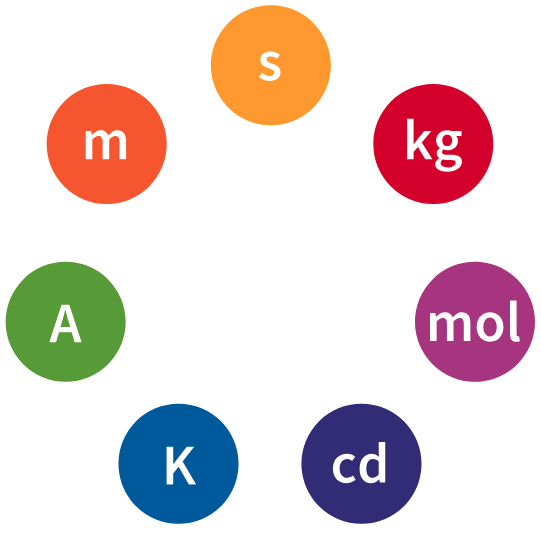https://en.wikipedia.org/wiki/SI_base_unit

Candela Definition
The factor 683 originates from the 1979 SI definition, which establishes that 1 watt of radiant power at 555 nm corresponds to 683 lumens of luminous flux. This number is based on experimental data on human vision and ensures that the lumen measurement aligns with practical light source observations.
Generalized Candela Formula
Where:
Expanded Candela Formula with Planck's Law
Where:
Candela in Terms of Solid Angle
Where:
Human Vision Sensitivity: Experimental Measurement
To determine the peak luminous efficacy for any given condition (photopic, scotopic, or mesopic vision), experiments are conducted on human vision sensitivity. The key conditions are:
Photopic Vision (Daylight):
Peak luminous efficacy occurs at 555 nm under normal daylight conditions.
Scotopic Vision (Low Light/Night):
Under dim lighting, the peak shifts to 507 nm (blue-green), and the luminous efficacy decreases significantly.
Mesopic Vision (Twilight):
In transitional lighting between day and night, both photopic and scotopic vision are active, and the peak shifts between 555 nm and 507 nm.
Steps to Measure Peak Luminous Efficacy:
Light Source: Use a monochromatic light source of a specific wavelength, such as green (555 nm) or blue-green (507 nm), depending on the condition being tested.
Power Measurement: Measure the radiant power of the light source using a calibrated photometer. This gives the energy per second emitted by the light source in watts.
Human Perception Tests: Human participants assess the perceived brightness of the light. The intensity of different wavelengths is adjusted to find the point where humans perceive them as equally bright.
Luminous Efficacy: Calculate the ratio of perceived brightness (lumens) to radiant power (watts). The wavelength that corresponds to the maximum ratio of lumens to watts is the peak luminous efficacy (
Luminous Efficacy Function
Luminous efficacy
Where:
Photopic Luminosity Function
The sensitivity of the human eye, represented by the photopic luminosity function
At 555 nm (green light), the sensitivity is maximized:
As the wavelength shifts towards the blue or red, the sensitivity decreases. Example values include:
These values are empirical, based on human vision experiments, and standardized by organizations like the CIE (Commission Internationale de l'Éclairage).
Solid Angle and Candela
The term
A solid angle is the three-dimensional analog of a two-dimensional angle. In the context of photometry, candela measures luminous intensity, which is the luminous flux per unit solid angle. For a light source emitting uniformly in all directions, the solid angle is
Variables and Constants to Use:
Sun temperature
Planck's constant
Speed of light
Boltzmann constant
Wavelength range
Luminous efficacy at peak
Photopic luminosity function
Solid angle
Step 1: Calculate the Solid Angle
For simplicity, let’s assume we have a satellite with a circular area
Step 2: Planck's Law for Radiated Power per Wavelength
Using Planck's law for the Sun’s surface temperature
We will compute this over the visible range of
Step 3: Incorporate the Photopic Luminosity Function and
We multiply the Planck distribution
Thus, the full equation becomes:
Step 4: Calculate the Integral for the Candela
Now, integrate the product of the Planck distribution, the luminosity function
Step 5: Final Output:
After numerically evaluating the integral and plugging in the values, we calculate the candela (cd) value as:
This large value reflects the intense radiative power of the Sun, combined with the small solid angle subtended by the satellite. The constant 683 (luminous efficacy) is included in the calculation to account for human eye sensitivity at different wavelengths within the visible spectrum.
Variables and Constants to Use:
Sun temperature
Planck's constant
Speed of light
Boltzmann constant
Wavelength range
Luminous efficacy at peak
A watt (W) is:
Photopic luminosity function
Solid angle
For an area
Step 2: Planck's Law for Radiated Power per Wavelength
Using Planck's law to describe the spectral radiance (power per unit area per unit wavelength per unit solid angle) at a temperature
Units for
Step 3: Incorporating the Photopic Luminosity Function and
The luminous efficacy
Breaking it down:
Step 4: The Full Candela Formula
The full equation now becomes:
Simplifying the units for clarity:
The units of the final result should be in candela (cd):
Step 5: Final Candela Value:
Numerically solving the integral gives us the candela (cd) value as:
This value represents the luminous intensity of sunlight hitting the satellite and observed from Earth. The constant
Variables and Constants to Use:
Sun temperature
Planck's constant
Speed of light
Boltzmann constant
Wavelength range
Luminous efficacy at peak
Photopic luminosity function
Solid angle
Step 2: Planck's Law for Radiated Power per Wavelength
Using Planck's law for the Sun’s temperature
Let’s now break down the units for each part of this equation:
Wavelength
Step 3: Incorporating the Photopic Luminosity Function and
Now, we integrate over the visible wavelength range and include the photopic luminosity function
Thus, the full equation becomes:
Breaking it down:
The exponential term
Step 4: The Full Candela Formula
Here’s the full equation for candela with all units explicitly written:
Step 5: Final Candela Value:
After numerically solving the integral and plugging in all these values, we get the candela (cd) value as:
This large value reflects the intensity of sunlight hitting the satellite and observed from Earth, accounting for the human eye's sensitivity (via